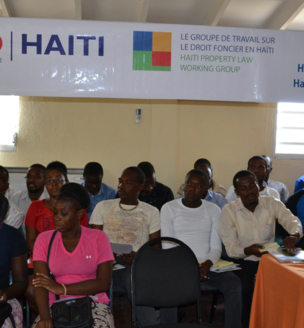As natural disasters increase in frequency and severity, it is essential to not only effectively respond to disasters, but to also secure land tenure and resource rights in advance and develop sustainable strategies to reduce the land tenure-related impacts of future disasters.
Given the scope and scale disasters, the length of time it takes to rebuild, and the potential displacement of populations, an effective response to a disaster requires pre- and post-disaster efforts. Ahead of time, disaster risk reduction (DRR) interventions can build resilience into institutions and communities with secure land tenure and property rights as necessities for the success of such efforts. Afterwards, shelter is one of the primary focuses of post-disaster programming, and response teams providing humanitarian assistance must also understand the formal and informal land and housing rights that existed prior to a disaster. Land tenure and property rights issues should be examined as early as possible because without clear rights to a given piece of land, programs based on rebuilding infrastructure or resettling displaced populations will be subject to conflict, delay, and increased costs.
Photo Credit: USAID


